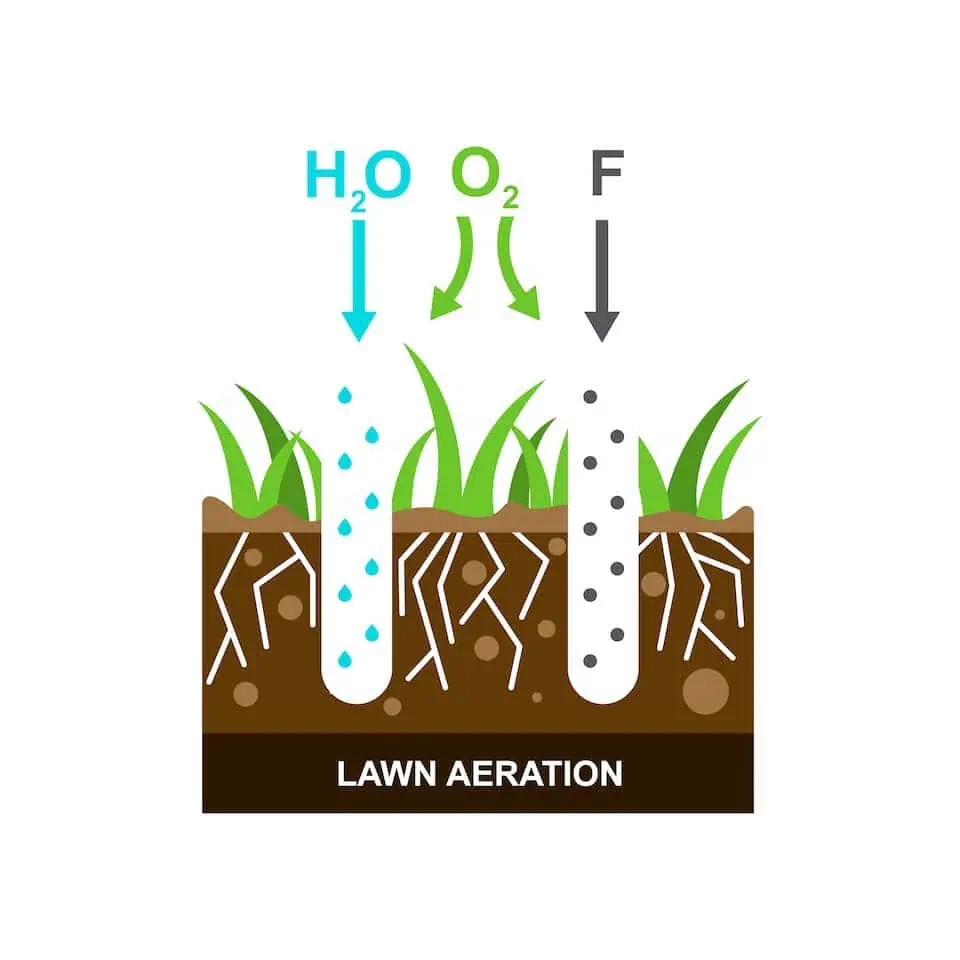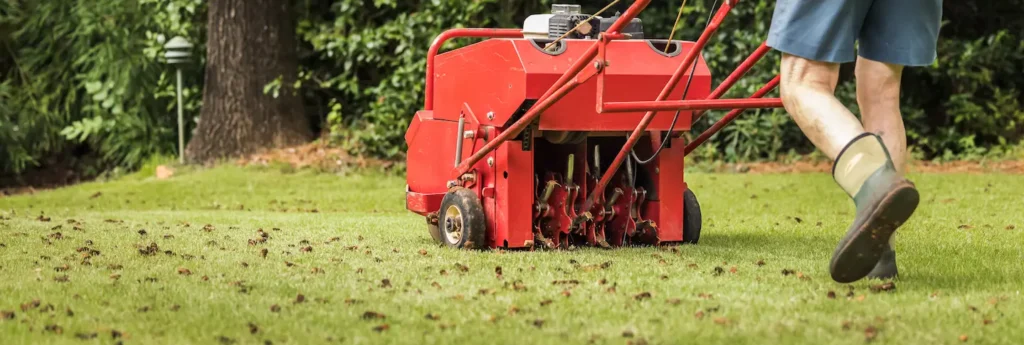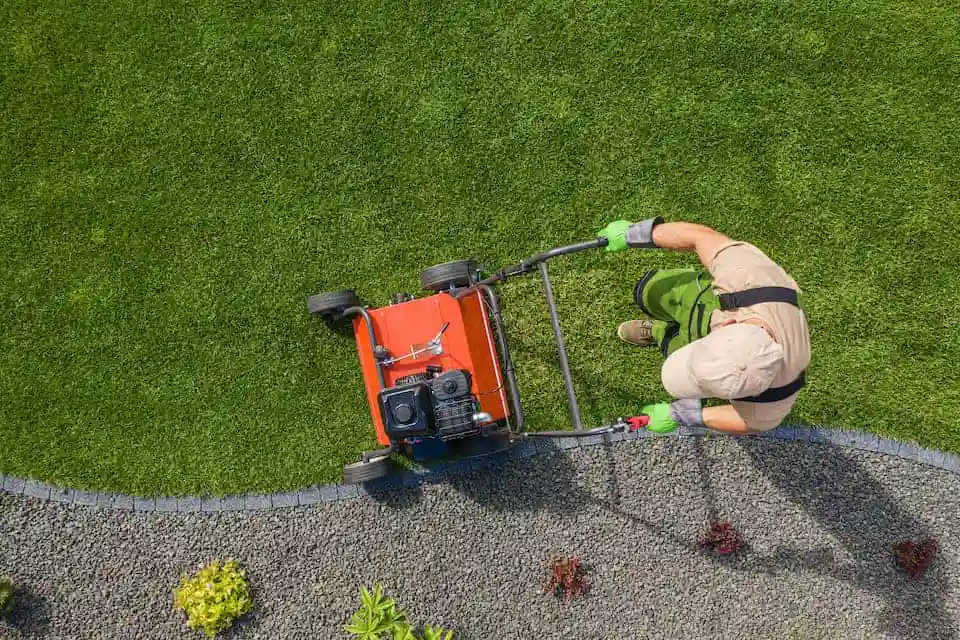When Should I Aerate My Lawn? The Ultimate Seasonal Guide
Lawn aeration is a fundamental practice that can make a world of difference in the health and appearance of your turf, but do you know the best time of year for aerating your lawn? Our lawn aeration experts from Turf TitanZ in Wake Forest, NC will walk you through everything you need to know about when and how to aerate your lawn throughout the year. Whether you’re a seasoned lawn care enthusiast or just getting started, we are here to be your trusted guide to comprehensive lawn care solutions so you can achieve the lawn of your dreams.

What is Lawn Aeration?
When we talk about lawn aeration, we’re referring to the process of perforating the soil and removing small cores or plugs from the ground. The practice of poking holes to reach the soil beneath your grass blades is a vital practice that directly impacts the health and vitality of your lawn. The primary purpose of core aeration for your lawn is to combat two common and detrimental issues: soil compaction and thatch buildup.
What is Compacted Soil?
Soil compaction occurs when the soil surface becomes densely packed, making it difficult for air, water, and essential nutrients to penetrate down to the grassroots. This can lead to stunted growth, poor root development, and a lawn that struggles to thrive. Creating soil plugs with a core aerator allows for water, air, and nutrients to alleviate compaction and penetrate beneath the surface, resulting in a healthier, greener lawn.
What is Thatch Buildup?
Thick thatch buildup refers to the accumulation of dead grass, roots, and other organic matter on the soil’s surface. While a certain amount of thatch is normal and even beneficial, too much thatch can create a barrier, preventing water, air, and nutrients from reaching the soil. This, in turn, can give rise to a host of lawn problems, from disease susceptibility and poor nutrient absorption to blocking the natural growth process of the root system.
Benefits of Aerating Your Lawn
Now that we understand what lawn aeration is, let’s delve into the key benefits of why it’s essential for your lawn’s well-being.
Enhanced Air Exchange
By creating channels in the compact soil, annual aeration allows oxygen to reach the grassroots. Oxygen is crucial for root respiration, a process that enables roots to take up nutrients and grow vigorously. When roots receive an adequate oxygen supply, they become stronger and more resilient.
Improved Water Absorption
Compacted soil repels water, causing it to run off the surface instead of being absorbed. When you aerate the lawn, it helps water penetrate deep into the soil’s root zone, reducing the risk of runoff and ensuring that your lawn receives the hydration it needs for active growth.
Nutrient Uptake
When you aerate your lawn, it can more efficiently absorb and add nutrients essential for its health, like nitrogen, phosphorus, and potassium. This leads to healthier, greener grass.
Thatch Decomposition
Aeration aids to break down thatch and improve turf density, introducing beneficial microorganisms to the thatch layer. When you aerate your lawn you decompose thatch, helping your turf maintain an optimal level of thatch and preventing it from becoming a hindrance.

Aerate Your Lawn When These Common Signs Arise
Wondering if it’s time to aerate your lawn?
Here are some telltale signs that it’s time to pull out the aerator equipment or schedule professional aeration lawn services from a reputable landscaping contractor:
- Puddles and Water Runoff: If you get standing water that pools on your lawn’s surface or runs off quickly instead of being absorbed, it’s a sign of compacted soil.
- Sparse Grass Growth: Areas of thin or patchy grass can be indicative of poor root development, often caused by compaction.
- Thick Layer of Thatch: Examine your lawn’s thatch layer. If it’s thicker than half an inch, it might be impeding nutrient and water absorption.
- Frequent Lawn Stress: If your lawn frequently struggles during droughts or periods of high foot traffic, it might need aeration to fortify its resilience.
- Increased Pest and Disease Susceptibility: Compacted soil can create ideal conditions for pests and diseases to thrive, leading to more frequent issues.
When is the Best Time to Aerate Your Lawn?
For homeowners wondering which season is the best time to aerate, we are sharing information on the peak growing period, soil conditions, and how warm-season grasses vs cool-season grasses react to core aeration.
Spring Aeration
Spring brings the promise of new beginnings, and that includes your lawn’s health. As the temperatures rise, your grass awakens from its winter slumber and begins to grow again. This makes early spring and late spring prime times for lawn aeration.
Here’s why:
- Optimal Growth Conditions: During spring, the combination of warmer soil temperatures and increased soil moisture creates a favorable environment for grass growth. When you aerate in spring, your lawn has the entire growing season ahead to recover and flourish.
- Root Development: Spring aeration encourages robust root development. With freshly aerated soil, roots can more easily penetrate the ground, accessing essential nutrients and moisture for rapid growth.
- Thatch Reduction: Spring aeration helps break down any thatch buildup that occurred over the winter, ensuring your lawn is ready to thrive without obstructions.
Spring aeration can benefit various grass types commonly found in lawns. The suitability of grass types for aeration largely depends on the local climate and soil conditions. In Wake Forest, North Carolina, where the climate is classified as humid subtropical, the following grass types are commonly used and can benefit from spring aeration:
- Bermuda Grass
- Zoysia Grass
- Centipede Grass
- Fescue Grass
- Bluegrass
Summer Aeration
While spring is the optimal time for lawn aeration, there are instances when early summer aeration might be necessary.
Here are some scenarios where aerating during the hot summer months could benefit your actively growing lawn:
- High Foot Traffic: If your lawn experiences heavy foot traffic during the summer due to family gatherings, barbecues, or outdoor events, it can lead to soil compaction. Aeration can help alleviate this stress on your lawn.
- Thatch Buildup Correction: If you missed spring aeration and notice significant thatch buildup during the summer, it’s not too late. Aeration can still help reduce thatch and improve nutrient and water absorption.
- Sparse Growth Areas: Some areas of your lawn might struggle to thrive during the summer due to compaction or poor root development. Aeration can promote growth in these challenging spots.
The following warm-season grass types are well-suited for hot and humid summer aeration, as they are known for their heat tolerance and typically thrive during the summer months:
- Bermuda grass
- Zoysia grass
- Centipede grass
Fall Aeration
Fall is often regarded as one of the best times for lawn aeration, and for good reason. The benefits of fall aeration are numerous, and they play a pivotal role in preparing your lawn for the winter ahead and ensuring it comes back stronger in the spring:
- Reduction of Soil Compaction: Throughout the year, soil compaction can take a toll on your lawn. Fall aeration allows your grass to breathe by creating channels for air, water, and nutrients to reach the roots. This reduces compaction and promotes healthier root growth.
- Thatch Management: Fall aeration helps break down excess thatch, ensuring it doesn’t become a barrier to essential resources. This keeps your lawn free from thatch-related problems.
- Enhanced Nutrient Absorption: With cooler temperatures and reduced competition from weeds, your grass can efficiently absorb nutrients in the fall. Aeration maximizes nutrient uptake, setting the stage for a lush, green lawn in the coming seasons.
- Overseed Success: Fall aeration pairs perfectly with overseeding. The aeration holes provide an ideal environment for new grass seeds to establish strong roots before winter, resulting in a thicker, more resilient lawn.
Fall is the optimal time for cool-season grass types to thrive in the cooler weather. Common cool-season grasses perfect for fall aeration include:
- Kentucky Bluegrass
- Tall Fescue and Fine Fescue
- Ryegrass
Winter Aeration
Winter aeration is a less common practice compared to other seasons due to the potential challenges it poses. However, there are specific situations where winter aeration might be necessary, including:
- Compacted Snow: In regions with heavy snowfall, the weight of accumulated snow can lead to soil compaction. Winter aeration can help relieve this compaction when conditions allow.
- Mild Winters: In areas with mild winters, where the ground doesn’t freeze completely, aeration can still be performed during the dormant season without causing significant harm to the lawn.

How Turf TitanZ’s Year-Round Lawn Care Services Can Help
Turf TitanZ’s year-round lawn care services offer a comprehensive approach to maintaining the health and beauty of your lawn throughout every season.
Expertise for Every Season
Turf TitanZ understands the unique needs of lawns in Wake Forest, NC, throughout the year. We specialize in tailoring our services to align with the local climate, grass types, and seasonal challenges. From aeration, fertilization, weed control, overseeding, mowing, water, landscaping design, and more, we can schedule a lawn service in whichever season best suits your lawn care needs.
Soil Testing
Our lawn care experts at Turf TitanZ conduct soil tests to tailor our services to your lawn’s specific needs, ensuring optimal health and growth no matter the time of year.
Customized Lawn Care Plans
Turf TitanZ creates personalized lawn care programs for our clients based on your grass type, climate conditions, and lawn care goals.
Timely and Professional Service
Turf TitanZ’s team of professional lawn care experts schedule services at the right times to maximize the benefits for your lawn, whether it’s aeration, fertilization, pest control, or another service.
Does Your NC Lawn Need Help? Contact Us Today for Aeration in Wake Forest
Is your North Carolina lawn showing signs of distress? Don’t wait for the problems to worsen. Take proactive steps to rejuvenate your lawn and keep it in prime condition. Turf TitanZ is here to help you achieve a lush, healthy lawn that will be the envy of your Wake Forest neighborhood.
Contact us today for lawn aeration services in Wake County by calling us at (919) 562-0771 or filling out the contact form below to get started.
